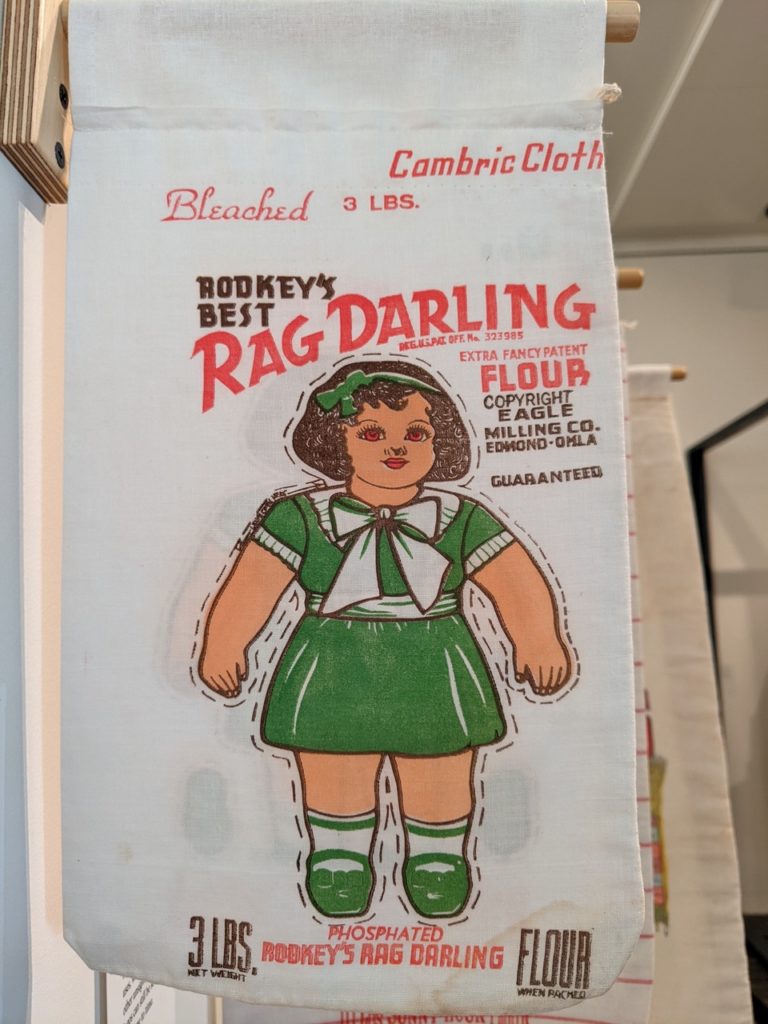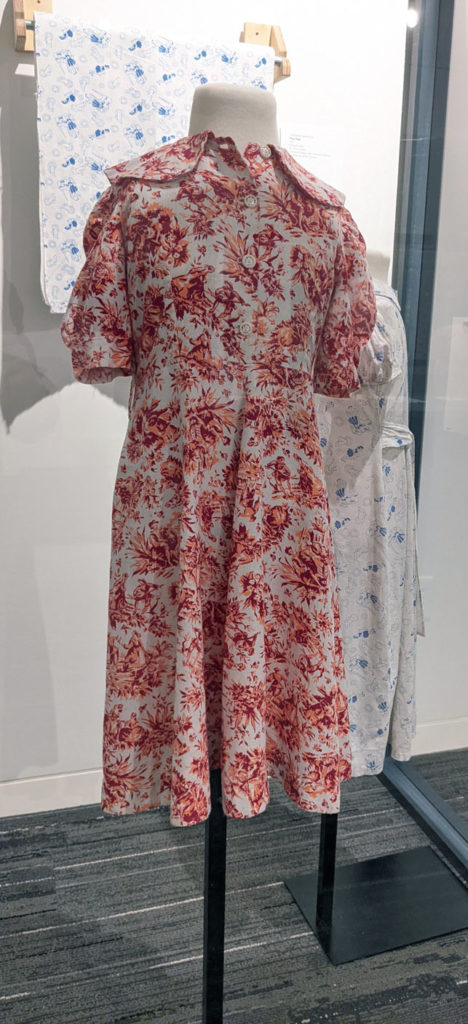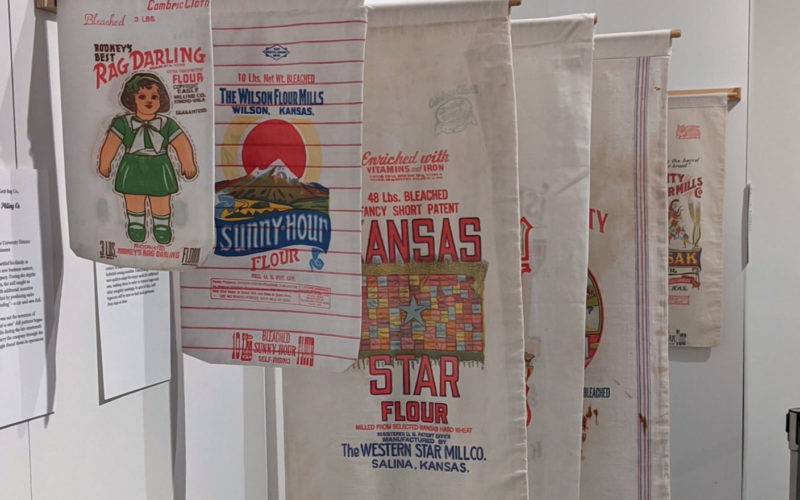BECCA MARTIN-BROWN
bmartin@nwaonline.com
If your New Year’s resolution for 2022 is “reduce, reuse, recycle,” then the Rogers Historical Museum has the perfect exhibit to inspire you. Titled “Thrift Style,” and organized by the Historic Costume and Textile Museum and the Marianna Kistler Beach Museum of Art, both at Kansas State University, and ExhibitsUSA, a program of Mid-America Arts Alliance, the exhibit “illuminates how the ‘upcycling’ of feed sacks mutually benefited 20th-century consumers and businesses.”
“With 41 works from patterns to garments, it serves as an example of past ingenuity that can inform today’s efforts towards sustainability,” says Serena Barnett, museum director. Barnett took time just before Christmas to answer these questions for What’s Up!
Q. How did you find this exhibit?
As part of our regular exhibit planning, we stay up to date on what traveling exhibits are currently available from other museums and exhibit companies. We’re always looking to find ones with interesting topics that fit with our local history, such as when we came across “Thrift Style” a couple of years ago while looking at the options from ExhibitsUSA. This has been a popular exhibit, touring at museums all around the United States for over a year already. This was the earliest available time we could schedule it to come here.
Q. What made it attractive to you for this time and place?
Like so many towns across America during the 1930s and 1940s, our area felt the economic impact of the Great Depression and then World War II. Families had to find ways of stretching their money and one of the ways was to use feed, or flour, sacks to make clothing and other household items. Originally, these cotton sacks were plain white, but once sack manufactures learned that their sacks were being used as fabric for shirts and dresses, they began printing designs on them. They even started using a special ink for the manufacture stamps that would easily wash out so as not to interfere with the fabric’s print design.
Q. Walk us through the exhibit. What will people see?
Visitors will see a variety of flour sacks that date from the 1930s-40s, each with their own distinctive colors and patterns, and examples of how these fabrics were repurposed into such items as dresses and quilts. Some of the patterns even reflect popular culture of the time. There are sack prints featuring American Wild West themes for children, including the iconic cowboy Red Ryder. Today we mostly associate this character with the famous Daisy Airgun Rifle of the same name.
Q. Do you have any memories of your family’s “make do or do without” ethic?
My grandmother and her three siblings were young children during the Great Depression. I have heard her recall how she only had two dresses, one to wear and one to wash. Living on a farm, her family was able to grow some of their food, but once the drought came, that wasn’t even an option. Like so many families from Arkansas struggling to make ends meet, my great-grandparents moved the family to California for a while so that my great-grandfather could find steady work. He was lucky and found employment as an auto mechanic. Money was still tight however, and my grandma remembers how her parents told her and her older sister one Christmas that they couldn’t afford to give them anything that year as they wanted to be sure to give her younger brother and baby sister, who were too young to understand, something from Santa.
Q. How do you see people practicing make do or do without in 2021?
In recent years, there has been a resurgence of upcycling with the increased awareness of environmentally friendly practices to keep items out of the landfills. People are finding creative ways to recycle materials, using everything from plastic bags to make floor mats to wooden pallets to build furniture.

In 1945, the women of the Rogers Christian Science Church were making garments from feed sacks as a war relief project. The sacks were donated by a sack manufacturer and by area farm wives, and the garments were put on display at a local department store. The ladies also were gathering costume jewelry to raise the spirits of women in war-devastated Europe. Rogers residents had already donated 9,000 pounds of clothing to be sent to Europe. (Courtesy Photo/RHM) 

This child’s dress, c. 1935, is part of the collection from the Kansas State University Historic Costume and Textile Museum on exhibit at the Rogers Historical Museum. (Courtesy Photo/RHM) 
Some feed sack patterns even reflect popular culture of the time, as do these from the Kansas State University Historic Costume and Textile Museum. Among sack prints featuring American Wild West themes for children was the iconic cowboy Red Ryder. Today we mostly associate this character with the famous Daisy Airgun Rifle of the same name. (Courtesy Photo/RHM)
__
FAQ
‘Thrift Style’
WHEN — 10 a.m.-4 p.m. Tuesday-Saturday through Jan. 19
WHERE — Rogers Historical Museum, 313 S. Second St. in Rogers
COST — Free
INFO — 621-1154 or rogershistoricalmuseum.org
BONUS — An Upcycling Creation Station from 10 a.m. to noon Jan. 15 will help participants craft a no-sew tote bag from an old T-shirt.



